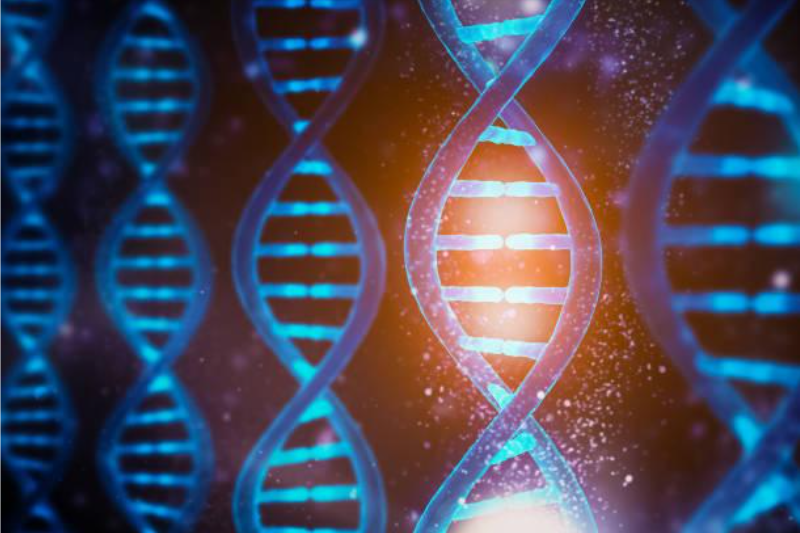Gene synthesis has become more critical in many areas of recombinant DNA technology. These areas include the creation of recombinant proteins. Its design allows for optimal codon use in the recombinant host system. Thus, allowing for efficient cellular translational machinery performance. However, the concept of gene synthesis is complex. So, I have discussed everything you should know about custom gene synthesis.
What is Custom Gene Synthesis?
Gene synthesis is the method in synthetic biology to build genes. This method builds the genes from scratch using nucleotides. However, gene synthesis doesn’t need a template, unlike DNA synthesis in living cells. This means that making almost any DNA sequence is possible in the lab.
It comprises two parts, the first of which is solid-phase DNA synthesis, also known as DNA printing. This results in oligonucleotide fragments with less than 200 base pairs. It’s possible to make a completely synthetic DNA molecule that doesn’t have a specific nucleotide sequence. The reason is that artificial gene synthesis doesn’t need any template DNA.

In 1972, a group of researchers demonstrated the synthesis of the first full gene. They made the first genes that make peptides and proteins in the next decade. Since then, synthetic biology has moved at a rapid speed.
Custom gene synthesis, which used to be expensive, has become more common. Researchers can now use this method due to the number of services and synthetic biology changes.
Custom gene synthesis depends on oligonucleotide synthesis technology, which is the best way to make PCR primers. Oligo synthesis is a computer-assisted chemical process that gathers based on a solid support in the correct order. However, the most extended oligo length that can be made is about 120 bases. The reason is that the chemical process isn’t efficient.
Advantages of Custom Gene Synthesis
No Restrictions on the Nucleotide Size
Gene synthesis has several advantages over the two most common gene cloning methods. These methods are molecular cloning and polymerase chain reaction. These two old ways have two significant flaws; it’s impossible to make new genes with them. Another flaw is that the former genetic sequence of interest must be found and amplified.

However, with gene synthesis, you don’t need to get the genetic information you want to study for it to be expanded. We can now make “new” sequences with existing technologies. This means that we can make a sequence of interest even though there isn’t a physical copy of the gene. This could be viral DNA or a cancer cell’s mutation in a specific gene.
Cheap and Easy to Use
People have used gene synthesis in research because it is easy to use and costs less than other methods. Recently, scientists have used gene synthesis to do viral research in DNA vaccines. They hope to make safer and more effective DNA vaccines with gene synthesis. Also, they have used it in the study of how cancer cells regulate their metabolism.
Read Also: Every Job Seeker Needs a LinkedIn Profile and Here’s Why
It was impossible to get specific gene treatment in the past. However, with gene synthesis, specific gene treatment has become possible. Many other things have been possible with the use of custom gene synthesis. For example, it can help us better understand how evolution and antibiotic resistance work. Further, it allows scientists to make different libraries and improve the function of proteins.
Gene Synthesis Saves Time
Traditional cloning involves multiple processes, including making primers and developing a cloning method. This method takes a lot of time. However, gene synthesis saves time and labor because it changes all target codons at once.
Methods of Gene Synthesis
Each gene synthesis method has its niche, and one can’t replace the other. Here are some of the methods.
Solid-phase Synthesis
Solid-phase synthesis is a method for synthesizing compounds attached to a solid support material. Excess reagent can be used to drive the reaction to completion and high yields. This method’s key benefit is its excellent accuracy, which offsets its expensive cost and poor output.
Chip-based DNA Synthesis
Chip-based synthesis uses microarray chips and various electrochemical processes. Assembly sub-pools allow different types of oligonucleotides to form in separate chip regions. Chip-based DNA synthesis is cheaper than solid-phase synthesis and can produce more of the target gene. But it lacks the accuracy of solid-phase synthesis.
PCR Based Enzyme Synthesis
PCR-based enzyme synthesis makes gene fragments through various cell systems. This method is good at making large parts of genes, and with the help of cell systems, you can be sure that the gene sequence is correct.
Applications for Gene Synthesis
Synthetic genes have several applications, from genetic circuits to metabolic enhancement. As technology advances, the concept of gene synthesis becomes clearer. So, scientists will be able to change and design genes. Meanwhile, here are some applications for gene synthesis.
Subcloning
It is possible to make almost any double-stranded DNA sequence with gene synthesis and put it into a plasmid. Gene synthesis makes it easy for synthetic fragments to be sequenced. So, stressful experiment cloning is a thing of the past.

Hybrid Genes Construction
With gene synthesis, you can change the order of protein domains with synthetic genes by combining parts of different genes. You can also add tags and signal sequences to your DNA sequence. This ensures that recombinant proteins are correctly made and easy to get rid of.
Read Also: Top 10 Cloud Apps for Android/iPhone
Conclusion
Gene synthesis benefits have no limits. However, the most significant advantage is its ease of use. Gene synthesis has made cloning and manipulation of genes easy, even without the physical copy of the genetic. All these have made gene synthesis the most effective method of genetic research.







































